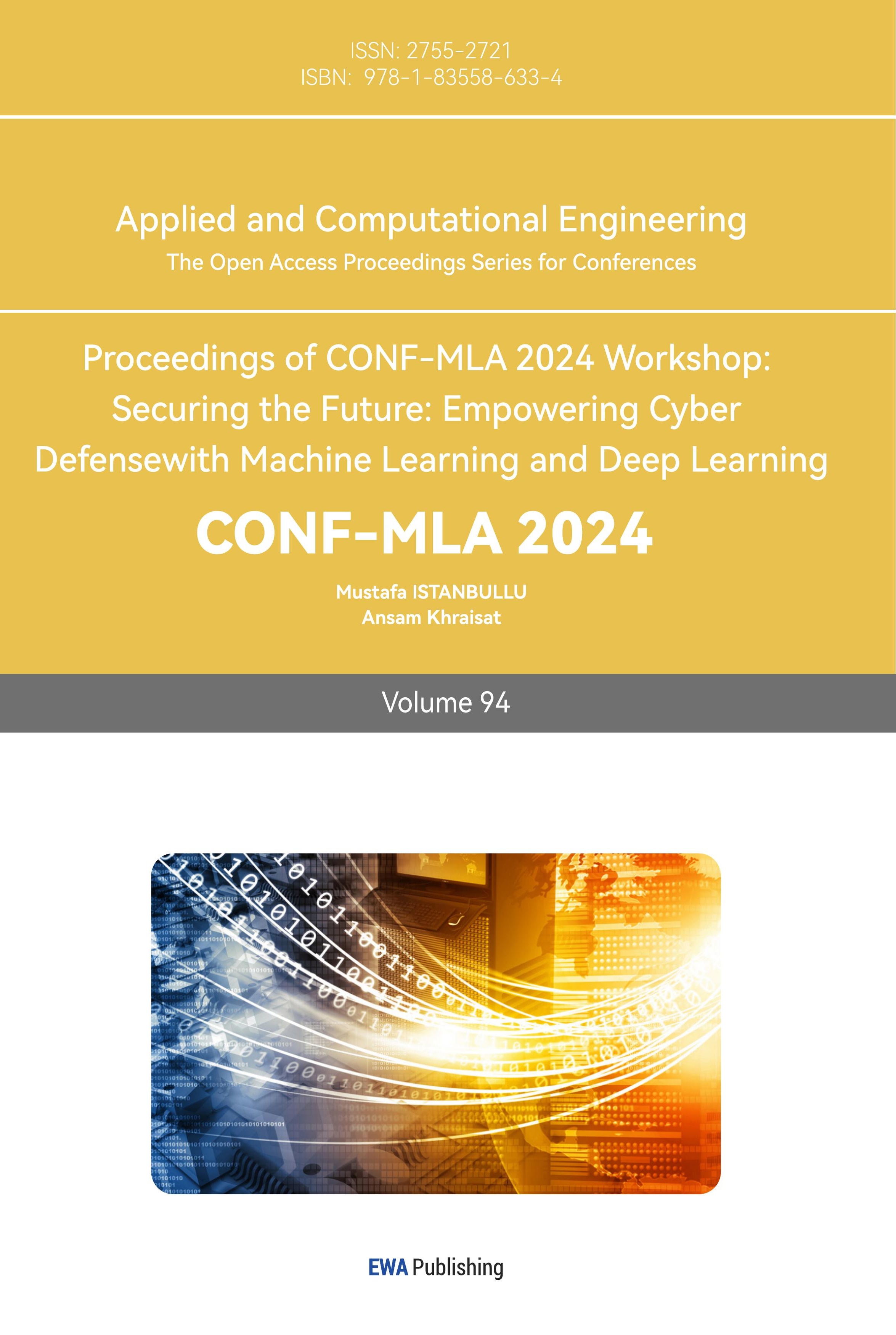1. Introduction
With global warming intensifying, summers in southern China have become increasingly hot and humid, with persistently high temperatures. To create a more comfortable living environment, it is essential to design glass windows that minimize the amount of sunlight entering a room, thereby reducing indoor temperatures. According to Christian Faivre Delord, the general representative of the French Glass Entrepreneurship Federation, the demand for glass with improved thermal insulation properties is growing. The advent of multi-layer glass, which offers not only enhanced safety by providing a secure, reliable, and quiet environment but also satisfactory thickness suitable for various types of doors and windows, is particularly noteworthy. Notably, the thermal insulation performance of multi-layer glass is exceptional, enabling it to meet energy-saving standards, provide a comfortable environment for occupants, and reduce energy consumption [1]. Heat reflective triple glazing is mainly used in buildings to avoid heating caused by solar radiation, and it is suitable for doors and windows of all kinds of buildings, windows of automobiles and ships, glass curtain walls, and all kinds of artistic decorations. It can also be used to make insulating glass or laminated glass windows to improve their thermal insulation properties.
Literature review: To address the challenge of reducing solar radiation heat entering indoor spaces, extensive research has been conducted on heat reflective glass. For example, Lian Songyou, Yu Yunpeng, Lin Shunhui, and others have calculated the optical characteristics of multi-layer films, specifically focusing on the reflectivity of multi-layer antireflection coatings [2]. Ma Liru, Yu Jianfeng, and colleagues developed nanoparticle transparent glass thermal insulation coatings by incorporating cosolvents and functional nanomaterials, and they investigated various factors influencing the properties of these coatings [3]. Wu Zhongyi, Wang Silin, Tang Wuji, and others have examined heat-reflective and low-emissivity (Low-E) glass, which reflects sunlight and infrared light by coating float glass with metallic silver, thereby reducing the emissivity of the glass surface [4]. Zhang Haoyun and others emphasized that higher spectral transmittance in the 780-2500 nm range allows more infrared rays to penetrate, leading to increased indoor temperatures and higher energy consumption by cooling systems like air conditioners [5]. Liu et al. employed the Artificial Fish Swarm Algorithm to optimize the thickness design of multi-layer optical films, enhancing their optical properties within a specific wavelength range, thereby demonstrating the potential of this algorithm for optimizing complex structures [6]. Corrado Garlisi and his team highlighted the versatility and fine-tuning capabilities of multi-layer glass structures, which make them highly attractive for various applications [7]. For instance, windows in UK buildings are required to be in the range of or lower than 1.20–1.40 W/mK according to the fabric energy efficiency standard released by the UK Government [8]. Kumar K et al. measured the effect of the glazing materials of different windows on controlling the heat increase in buildings in the solar spectral range of 300-2500 nm, performing thermal analyses of a total of nine panes of glass in different eight directions and found that the grey reflective glass was the most energy-efficient of all the glasses tested in this study [9]. Yamaç Hİ et al. based on winter climate conditions, proposed a WFW system and a triple glass vacuum WFW with the advantages of vacuum glass [10]. Ismail KA R et al. investigated ventilation windows with and without reflective film for hot climate applications and showed that the temperature drop increased with the increase of the gap between the glass plates, and the spacing greater than about 0.03 m had a marginal effect [11]. Gorantla K et al. investigated the optimal design of triple-glazed units to reduce air conditioning costs. Five reflective glasses were selected out of 60 different triple-glazed configurations, and the solar optics of these triple-glazed window units were examined [12]. Huang et al. conducted a study to evaluate the performance of several popular energy-efficient window designs in a predominantly cooled climate, taking into account both thermal and daylighting performance, and found that Low-E glass performed best, while double glazing performed the worst [13]. Additionally, research has been conducted on embedding thin films in multi-layer heat-reflective glass to determine the solar extinction coefficient and visible light extinction coefficient. By combining these coefficients with an optical model, the effects of variables such as the number of thin film layers, their thickness, and the angle of incidence on the total radiation and visible light transmittance of multi-layer exhaust windows have been studied [14]. It is important to note that the performance of multi-layer glass is influenced by various factors, including the quality of the original glass, the number of air cavity layers, and the coating process [15]. The development of artificial intelligence also offers a lot of help in designing energy-efficient buildings in hot climates. Once the model is well trained, the AI-based prediction method has good prediction accuracy. In addition, the data acquisition and data loading process of these models is relatively convenient, and predictive models can be easily built [16]. Si B, Tian Z, Jin X, et al. evaluate the performance of artificial intelligence algorithms using metrics such as stability, robustness, effectiveness, speed, coverage, and locality to solve the effectiveness and efficiency of the optimization algorithm of building energy saving design optimization. They analyze the advantages and disadvantages of various algorithms and focus on evaluating three commonly used optimization algorithms, Hooke Jeeves, MOGA-II, and MOPSO [17].
This paper focuses on the structure of triple glazing and proposes an optimization method for the thickness of heat reflective triple glazing using the Artificial Fish Swarm Algorithm to reduce sunlight penetration into indoor spaces. The primary contributions of this work are as follows:
The thickness of heat reflective triple glazing is optimized by adjusting parameters in the Artificial Fish Swarm Algorithm, such as sensing distance and step size, to minimize sunlight transmittance.
The study aims to achieve a significant reduction in room temperature by optimizing the glass structure, contributing to energy savings and enhanced indoor comfort.
The final conclusions of this research offer scientific significance and practical reference value for the design and application of energy-efficient building materials.
In this paper, the structure of triple glazing is selected, and an optimization method of the thickness of heat reflective triple glazing based on artificial fish swarm algorithm is proposed to reduce the sunlight entering the room. The glass thickness is optimized by adjusting the parameters in the fish swarm algorithm, such as sensing distance and step size, so as to change the sunlight transmittance and achieve the purpose of reducing the room temperature. The final conclusion has certain scientific significance and reference value.
2. Theoretical analyses
2.1. Structural optimization methods for multi-layer glass
The transmittance of multi-layer glass is the outcome of numerous elements working together, including the glass's thickness, refractive index, and range of wavelengths in sunlight. Among them, the refractive index of glass is mainly limited by the material of glass. Therefore, this paper mainly considers the influence of glass thickness and sunlight wavelength range on the heat reflection performance of multi-layer glass. The specific implementation process is as follows: establish a model of multi-layer glass, given the initial refractive index of multi-layer glass and air refractive index, construct an objective function with the thickness of the glass and the range of sunlight wavelengths, and iteratively optimize the thickness of the multi-layer glass in the model through the artificial fish swarm algorithm, to obtain the minimum of the objective function, and at this time, the thickness of each layer of the glass in the multi-layer glass model is the optimal design of the multi-layer glass structure.
2.2. Objective function
In order to evaluate the impact of different multi-layer glass structures on thermal insulation performance, an objective function needs to be constructed to convert the problem of solving the optimal structure of multi-layer glass into the problem of solving the optimal value of the objective function. By solving the minimum value of the objective function, the optimal thickness of each glass layer in the multi-layer glass is obtained. In this paper, the total transmitted light intensity is calculated by the transmittance and incident light intensity of the single-layer glass through the sunlight ingested vertically, which constitutes the objective function:
\( T=\frac{{I_{t}}}{{I_{i}}}=\frac{(1-R{)^{2}}}{(1-R{)^{2}}+4R{sin^{2}}(kL)} \) (1)
In this formula.
\( {I_{i}}=\frac{1000}{[(λ-580{)^{2}}+1]} \) (2)
\( R={(\frac{n-{n_{0}}}{n+{n_{0}}})^{2}} \) (3)
\( k=\frac{2πn}{λ} \) (4)
R is the Fresnel equations (Fresnel equations), \( n \) is the refractive index of the glass material, \( {n_{0}} \) is the refractive index of air, T is the transmittance coefficient of sunlight ingested perpendicularly into a single pane of glass, \( {I_{t}} \) is the intensity of transmitted light, \( {I_{i}} \) is the incident light intensity, \( λ \) is the wavelength of sunlight intercepted in this study, which is 300-2000nm, \( k \) is the solar wave velocity, \( L \) is the glass thickness.
\( Y=sum(T{I_{t}}) \) (5)
\( Y \) is the total transmitted light intensity and is the objective function.
2.3. Algorithm for Artificial Fish Swarm
Li-Xiao-lei et al. introduced the Artificial Fish Swarm Algorithm (AFSA) in 2002 to simulate fish behaviors such feeding, swarming, following, and moving [19]. AFSA is a parallel and stochastic search algorithm inspired by nature and based on the collective movement of fish toward a specific target. The optimization is achieved by simulating the behavior of fish foraging, grouping and rearing and colliding. Figure 1 shows the flowchart of the AFSA.

Figure 1. Flowchart of the artificial fish swarm algorithm (Photo credit: Original).
Foraging behavior is a kind of behavior of fish to approach food by using vision to perceive the concentration of food in the water, and it is an iterative way to move towards the better direction in the optimization algorithm. Group behavior is the gathering of a large or small number of fish into a group to collectively forage for food and avoid enemies, which is a way of survival formed in the process of evolution. Fish will abide by two rules when gathering in a group: one is to try to move to the center of the neighboring partners, and the other is to avoid overcrowding. Rear and collision behavior is when a fish or several fish find food, fish in their vicinity will follow, causing fish further away to follow. The artificial fish explores the optimal position of the neighboring fish around them, and when the objective function value of the optimal position is greater than the objective function value of the current position and it is not very crowded, the current position moves one step towards the optimal neighboring fish. Otherwise it performs the foraging behavior [18,19].
3. Results and analysis
3.1. Overview of multi-layer glass
According to China's architectural glass regulations, ‘Technical Regulations for the Application of Architectural Glass’ JGJ 113-2015, the thicker the glass, the lower its strength, the current market commonly used three-glass, two-cavity insulating glass, the thickness of the glass on both sides of the glass should not be less than 4mm, and the difference in thickness should not be more than 3mm [20]. In this paper, 4-10mm glass is selected for analysis, and the default magnetic permeability of the glass material is 1, the dielectric constant is 3.9, and the refractive index is 1.5.
3.2. Calculation results
Before passing through the glass transmission, the incident spectrum of sunlight with a wavelength of 300-2000nm is a relatively smooth curve, and the total energy of the incident spectrum is 482607.28. The wavelength close to 580nm when the energy of the incident light is the largest. Figure 2 shows the spectra of the glass before transmission.
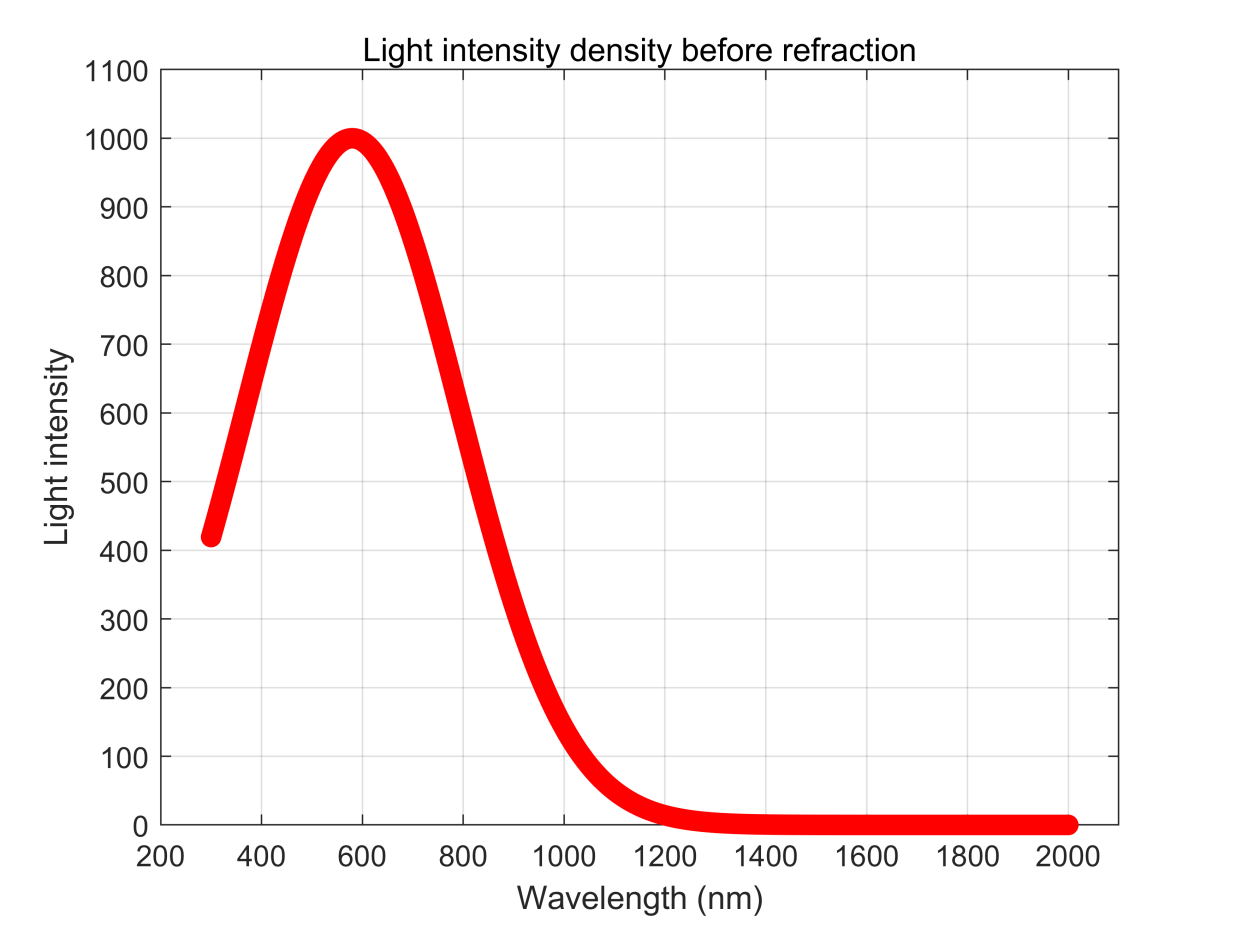
Figure 2. Spectra of glass before transmission (Photo credit: Original).
In this paper, the thickness of glass is calculated by artificial fish swarm algorithm by randomly generating an initial school of fish as the original data set. Table 1. shows the hyperparameter search range of the artificial fish school algorithm.
Table 1. Hyperparameter search range of artificial fish school algorithm.
Number of fishes | Number of iterations | Number of trials | Crowding factor | Sense distance/m | Step length/m |
100-1000 | 20-200 | 100-200 | 0.618 | 0.001-0.0001 | 0.001-0.0001 |
By screening the experimental results, several representative data sets are selected in this paper. L1, L2, L2 correspond to the first, second and third layers of glass, respectively. Table 2 shows the triple glass thickness and the corresponding objective function.
Table 2. Triple glazing thickness and corresponding objective function.
Group No. | Glass thickness L1(mm) | Glass thickness L2(mm) | Glass thickness L3(mm) | Objective function value |
1 | 7.8 | 8.4 | 7.3 | 374067.43 |
2 | 9.4 | 8.8 | 7.4 | 373933.43 |
3 | 7.5 | 7.1 | 8.3 | 373908.97 |
4 | 6.5 | 4.5 | 4.1 | 373905.23 |
5 | 6.1 | 7.9 | 5.4 | 373417.28 |
6 | 5.9 | 6.4 | 8.8 | 372661.87 |
7 | / | / | / | 482607.28 |
To improve the intuitiveness of the experimental outcomes, this paper selects 3-6 groups to analyze the solar spectrum after transmission through the glass. Figure 3 shows the spectra after glass transmission for groups 3-6.

Figure 3. Spectra of glass after transmission for groups 3-6 (Photo credit: Original).
3.3. Comparison of results
This paper compares the objective function corresponding to the thickness of the triple glazing in Table 2, and it can be seen that L1 is 5.9mm, L2 is 6.4mm, and L3 is 8.8mm thickness of the glass corresponding to the minimum intensity of the transmitted light, that is the optimal solution obtained in this paper. Figure 4 shows the iterative process of the artificial fish swarm algorithm to find the optimal solution.
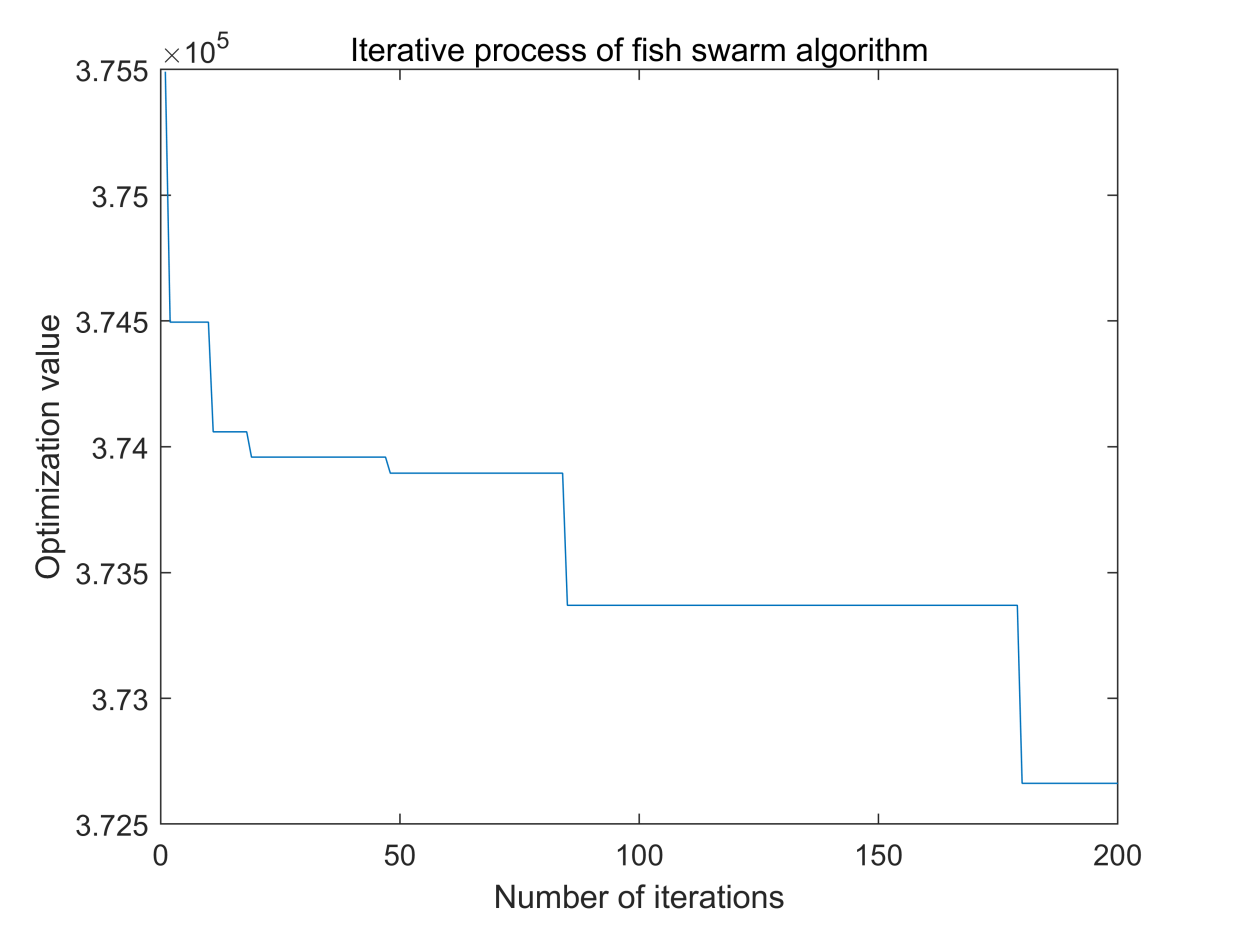
Figure 4. Iterative process of artificial fish swarm algorithm to find the optimal solution (Photo credit: Original).
Comparing the intensity of sunlight of 300-2000nm wavelengths transmitted through the triple glazing with the intensity before there is no glass shielding, it can be seen that the total energy is reduced to some extent. Comparing the incident spectrum of sunlight of 300-2000nm wavelength with the transmission spectrum, it can be seen that the spectrum after transmission is significantly reduced compared to the incident. Figure 5 shows the change in the total energy of sunlight before and after the transmission of triple glazing. Figure 6 shows the spectrum before and after the transmission of the triple glazing.
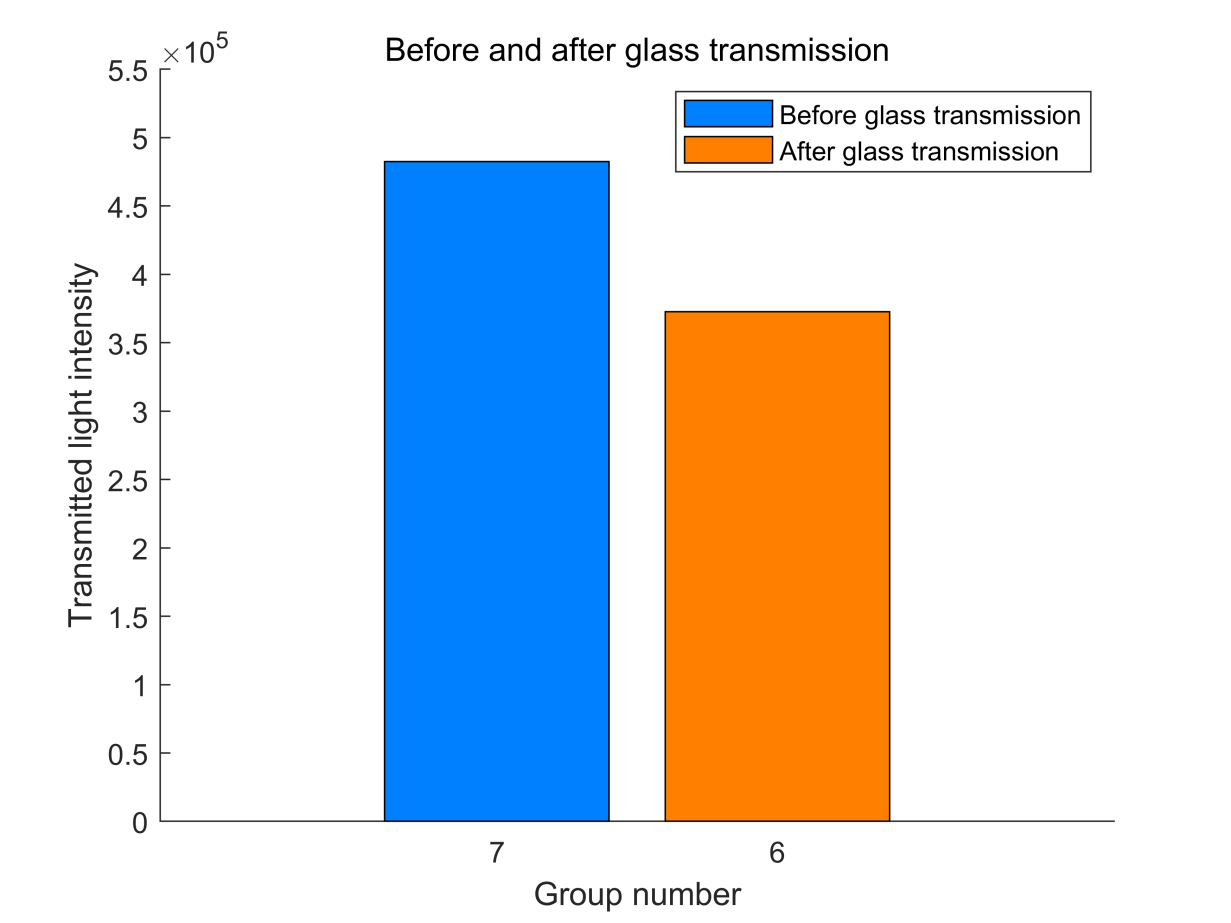
Figure 5. Intensity of sunlight before and after triple glazing transmission (Photo credit: Original).
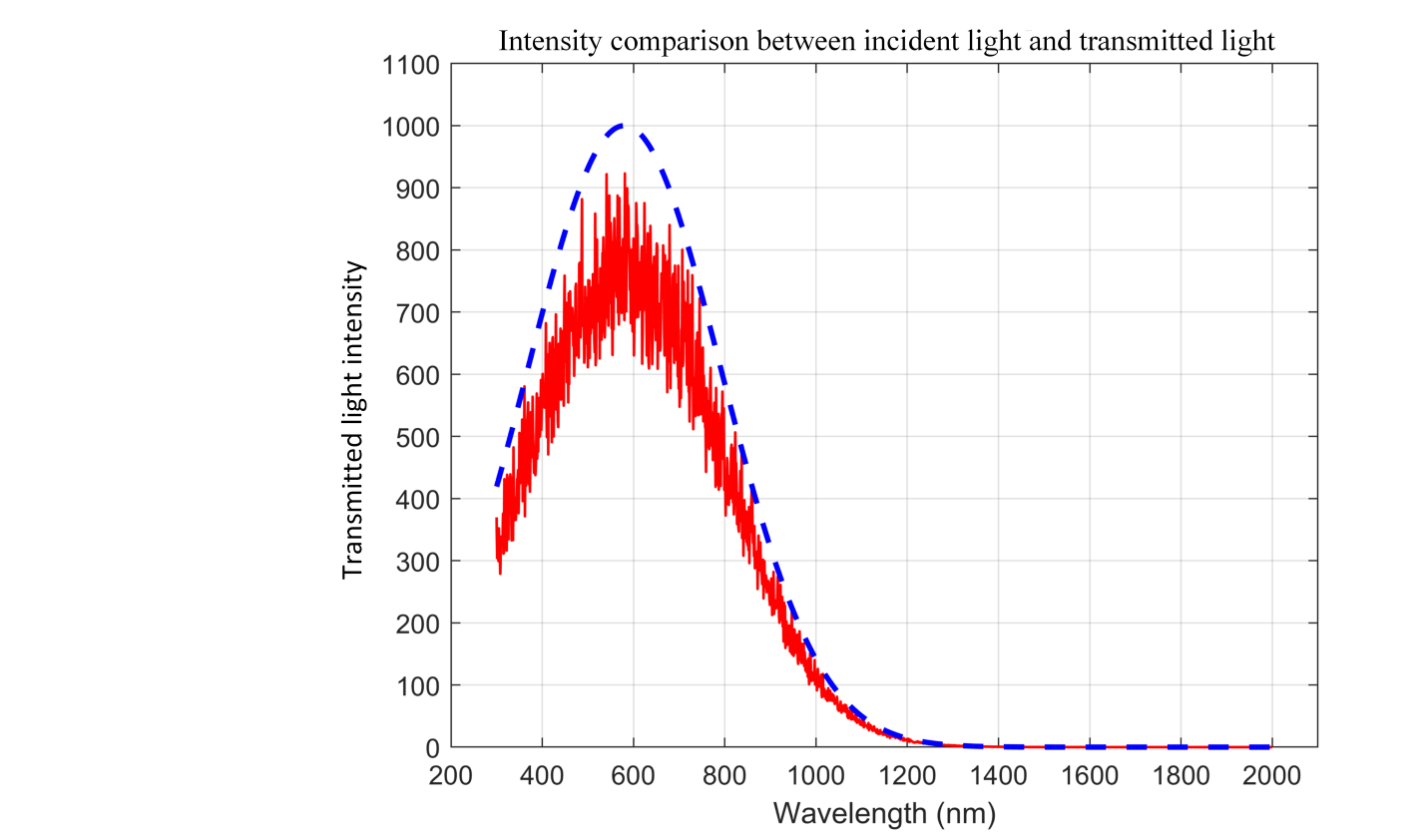
Figure 6. Spectra before and after transmission of triple glazing (Photo credit: Original).
In order to ensure the accuracy of the experimental results, this paper traverses the thickness of the three-layer glass, setting the maximum value of the thickness of the three-layer glass as 1 cm, the minimum value as 4 mm, and the step size as 0.5 mm. By means of traversal, the results are compared with the optimal solution derived from the artificial fish swarm algorithm selected in this paper. Figure 7 shows the contrast between the traversal results and the results of the optimization algorithm.
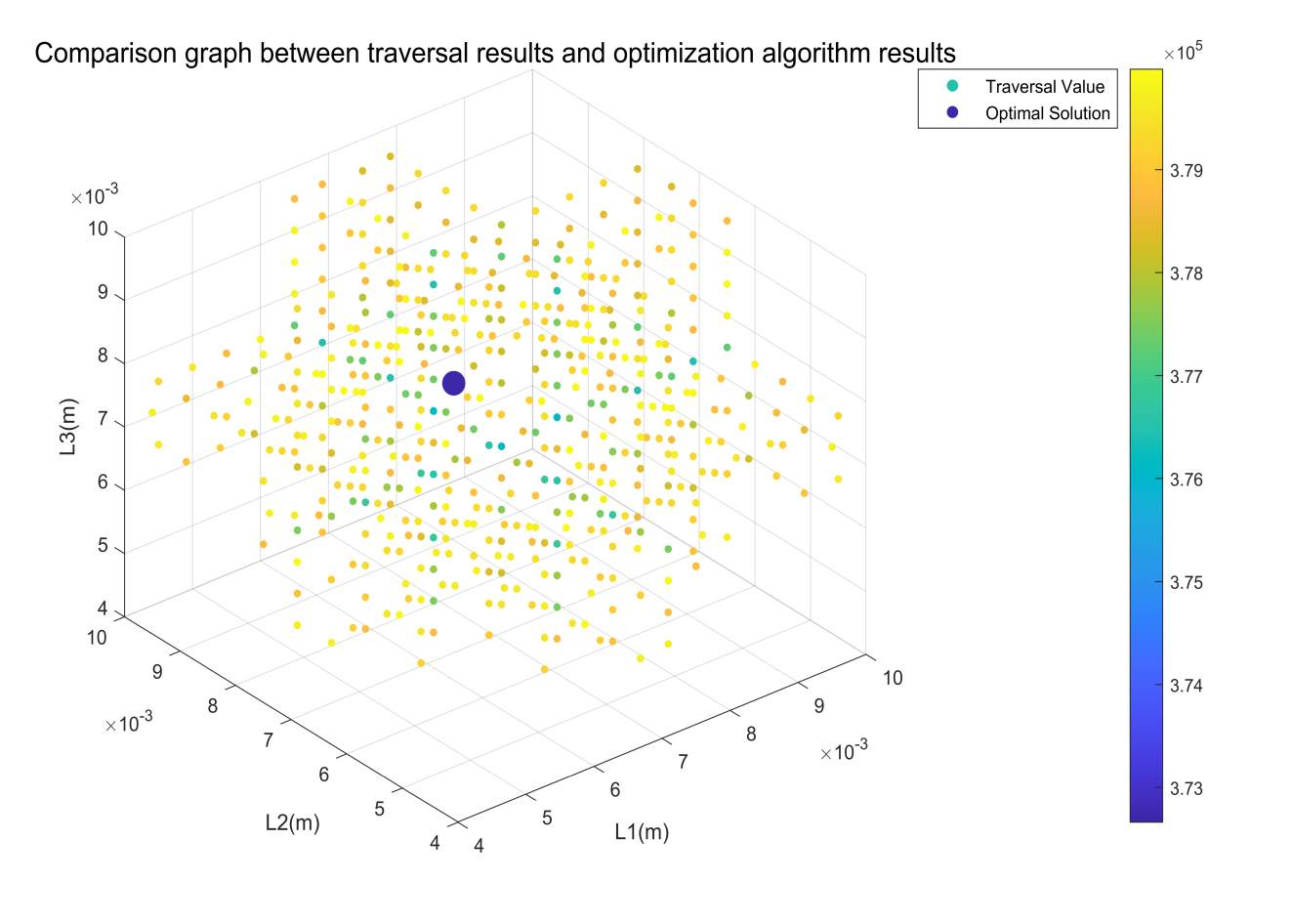
Figure 7. Comparison between traversal results and optimization algorithm results (Photo credit: Original).
The transmitted light intensity determined by the artificial fish schooling algorithm is smaller than that obtained by all of the traversals, as seen in Figure. 7, which guarantees the precision of the outcomes. At the same time, due to the non-replicability of the traversal method, the AFSA is much stronger than the results obtained by the traversal method in terms of generalizability, and is much less time-consuming and arithmetic than the traversal method, which illustrates the superiority of the AFSA.
4. Conclusion
This study has successfully analyzed the thermal performance of heat-reflective triple glazing using the Artificial Fish Swarm Algorithm. The optimal glass configuration identified consists of layers with thicknesses of 5.9mm, 6.4mm, and 8.8mm. This configuration effectively minimizes the total energy of light transmittance into the room, thereby offering a significant reduction in indoor temperature. The comparison between the optimal transmitted light intensity obtained via the Artificial Fish Swarm Algorithm and the results from a brute-force traversal method clearly demonstrates the superiority of the algorithm, as it consistently produces lower transmitted light intensities, highlighting its effectiveness in optimizing complex systems.
Looking forward, this research paves the way for further exploration of advanced optimization techniques in the design of energy-efficient building materials. Future studies could focus on integrating additional variables such as different glass coatings, varying environmental conditions, and the incorporation of smart technologies for adaptive glazing solutions. Moreover, expanding the application of the Artificial Fish Swarm Algorithm to other areas of architectural design could further enhance energy efficiency and contribute to sustainable building practices.
Authors Contribution
All the authors contributed equally and their names were listed in alphabetical order.
References
[1]. Zhang, Q. (2002). Glass begins to develop into multi-layer. Engineering Design CAD and Intelligent Building, (03), 77.
[2]. Lian, S., Yu, Y., Lin, S., Lin, G., Xu, C., & Wang, J. (2017). Design and calculation of optical anti-reflection and anti-reflection multilayer films. Materials Science, 7(1), 78-87.
[3]. Ma, L., & Yu, J. (2024). Preparation and properties of nanoparticle transparent thermal insulation coatings. Shanghai Coatings, 62(02), 12-16.
[4]. Zhu, X., Guo, C., Feng, H., Huang, Y., Feng, Y., Wang, X., & Wang, R. (2024). A Review of Key Technologies for Emotion Analysis Using Multimodal Information. Cognitive Computation, 1-27.
[5]. Zhang, H., An, Y., Xu, G., et al. (2022). Analysis of photothermal properties of single piece building glass. China Building Materials Science and Technology, 31(01), 22-24.
[6]. Liu, H., Feng, Q., & Liu, C. (2020). Thickness optimization of multilayer films using a modified artificial fish swarm algorithm. Journal of Applied Physics, 128(15), 153101.
[7]. Garlisi, C., Trepci, E., Li, X., Al Sakkaf, R., Al-Ali, K., Pereira Nogueira, R., Zheng, L., Azar, E., & Palmisano, G. (2020). Multilayer thin film structures for multifunctional glass: Self-cleaning, antireflective and energy-saving properties. Applied Energy, 264, 114697.
[8]. Zero Carbon Hub, (UK). Fabric energy effciency for zero carbon homes. Aflexible performance standard for 2016.www.zerocarbonhub.org accessed08.10.15].
[9]. Kumar K, Saboor S, Kumar V, et al. Experimental and theoretical studies of various solar control window glasses for the reduction of cooling and heating loads in buildings across different climatic regions[J]. Energy and Buildings, 2018, 173: 326-336.
[10]. Yamaç H İ, Koca A. Performance analysis of triple glazing water flow window systems during winter season[J]. Energy, 2023, 282: 128808.
[11]. Ismail K A R, Lago T G S, Lino F A M, et al. Experimental investigation on ventilated window with reflective film and development of correlations[J]. Solar Energy, 2021, 230: 421-434.
[12]. Gorantla K, Shaik S, Kontoleon K J, et al. Sustainable reflective triple glazing design strategies: Spectral characteristics, air-conditioning cost savings, daylight factors, and payback periods[J]. Journal of Building Engineering, 2021, 42: 103089.
[13]. Huang Y, Niu J, Chung T. Comprehensive analysis on thermal and daylighting performance of glazing and shading designs on office building envelope in cooling-dominant climates[J]. Applied energy, 2014, 134: 215-228.
[14]. Wang, R., Zhu, J., Wang, S., Wang, T., Huang, J., & Zhu, X. (2024). Multi-modal emotion recognition using tensor decomposition fusion and self-supervised multi-tasking. International Journal of Multimedia Information Retrieval, 13(4), 39.
[15]. Chen, Y. (2024). Influence analysis of exterior window glass on ultra-low energy consumption building. Shanghai Building Materials, (03), 22-24+28. Retrieved from [2024-08-21].
[16]. Farzaneh H, Malehmirchegini L, Bejan A, et al. Artificial intelligence evolution in smart buildings for energy efficiency[J]. Applied Sciences, 2021, 11(2): 763.
[17]. Si B, Tian Z, Jin X, et al. Performance indices and evaluation of algorithms in building energy efficient design optimization[J]. Energy, 2016, 114: 100-112.
[18]. Pourpanah F, Wang R, Lim C P, et al. A review of artificial fish swarm algorithms: Recent advances and applications[J]. Artificial Intelligence Review, 2023, 56(3): 1867-1903.
[19]. Li Xiaolei. A new intelligent optimization method-artificial fish swarm algorithm[D].Zhejiang University,2003.
[20]. JGJ 113-2015. (2015). Technical Regulations for the Application of Building Glass.
Cite this article
Huang,J.;Liu,J.;Shen,H. (2024). Optimization of Heat Reflective Triple Glazing Thickness Using the Artificial Fish Swarm Algorithm. Applied and Computational Engineering,94,40-48.
Data availability
The datasets used and/or analyzed during the current study will be available from the authors upon reasonable request.
Disclaimer/Publisher's Note
The statements, opinions and data contained in all publications are solely those of the individual author(s) and contributor(s) and not of EWA Publishing and/or the editor(s). EWA Publishing and/or the editor(s) disclaim responsibility for any injury to people or property resulting from any ideas, methods, instructions or products referred to in the content.
About volume
Volume title: Proceedings of CONF-MLA 2024 Workshop: Securing the Future: Empowering Cyber Defense with Machine Learning and Deep Learning
© 2024 by the author(s). Licensee EWA Publishing, Oxford, UK. This article is an open access article distributed under the terms and
conditions of the Creative Commons Attribution (CC BY) license. Authors who
publish this series agree to the following terms:
1. Authors retain copyright and grant the series right of first publication with the work simultaneously licensed under a Creative Commons
Attribution License that allows others to share the work with an acknowledgment of the work's authorship and initial publication in this
series.
2. Authors are able to enter into separate, additional contractual arrangements for the non-exclusive distribution of the series's published
version of the work (e.g., post it to an institutional repository or publish it in a book), with an acknowledgment of its initial
publication in this series.
3. Authors are permitted and encouraged to post their work online (e.g., in institutional repositories or on their website) prior to and
during the submission process, as it can lead to productive exchanges, as well as earlier and greater citation of published work (See
Open access policy for details).
References
[1]. Zhang, Q. (2002). Glass begins to develop into multi-layer. Engineering Design CAD and Intelligent Building, (03), 77.
[2]. Lian, S., Yu, Y., Lin, S., Lin, G., Xu, C., & Wang, J. (2017). Design and calculation of optical anti-reflection and anti-reflection multilayer films. Materials Science, 7(1), 78-87.
[3]. Ma, L., & Yu, J. (2024). Preparation and properties of nanoparticle transparent thermal insulation coatings. Shanghai Coatings, 62(02), 12-16.
[4]. Zhu, X., Guo, C., Feng, H., Huang, Y., Feng, Y., Wang, X., & Wang, R. (2024). A Review of Key Technologies for Emotion Analysis Using Multimodal Information. Cognitive Computation, 1-27.
[5]. Zhang, H., An, Y., Xu, G., et al. (2022). Analysis of photothermal properties of single piece building glass. China Building Materials Science and Technology, 31(01), 22-24.
[6]. Liu, H., Feng, Q., & Liu, C. (2020). Thickness optimization of multilayer films using a modified artificial fish swarm algorithm. Journal of Applied Physics, 128(15), 153101.
[7]. Garlisi, C., Trepci, E., Li, X., Al Sakkaf, R., Al-Ali, K., Pereira Nogueira, R., Zheng, L., Azar, E., & Palmisano, G. (2020). Multilayer thin film structures for multifunctional glass: Self-cleaning, antireflective and energy-saving properties. Applied Energy, 264, 114697.
[8]. Zero Carbon Hub, (UK). Fabric energy effciency for zero carbon homes. Aflexible performance standard for 2016.www.zerocarbonhub.org accessed08.10.15].
[9]. Kumar K, Saboor S, Kumar V, et al. Experimental and theoretical studies of various solar control window glasses for the reduction of cooling and heating loads in buildings across different climatic regions[J]. Energy and Buildings, 2018, 173: 326-336.
[10]. Yamaç H İ, Koca A. Performance analysis of triple glazing water flow window systems during winter season[J]. Energy, 2023, 282: 128808.
[11]. Ismail K A R, Lago T G S, Lino F A M, et al. Experimental investigation on ventilated window with reflective film and development of correlations[J]. Solar Energy, 2021, 230: 421-434.
[12]. Gorantla K, Shaik S, Kontoleon K J, et al. Sustainable reflective triple glazing design strategies: Spectral characteristics, air-conditioning cost savings, daylight factors, and payback periods[J]. Journal of Building Engineering, 2021, 42: 103089.
[13]. Huang Y, Niu J, Chung T. Comprehensive analysis on thermal and daylighting performance of glazing and shading designs on office building envelope in cooling-dominant climates[J]. Applied energy, 2014, 134: 215-228.
[14]. Wang, R., Zhu, J., Wang, S., Wang, T., Huang, J., & Zhu, X. (2024). Multi-modal emotion recognition using tensor decomposition fusion and self-supervised multi-tasking. International Journal of Multimedia Information Retrieval, 13(4), 39.
[15]. Chen, Y. (2024). Influence analysis of exterior window glass on ultra-low energy consumption building. Shanghai Building Materials, (03), 22-24+28. Retrieved from [2024-08-21].
[16]. Farzaneh H, Malehmirchegini L, Bejan A, et al. Artificial intelligence evolution in smart buildings for energy efficiency[J]. Applied Sciences, 2021, 11(2): 763.
[17]. Si B, Tian Z, Jin X, et al. Performance indices and evaluation of algorithms in building energy efficient design optimization[J]. Energy, 2016, 114: 100-112.
[18]. Pourpanah F, Wang R, Lim C P, et al. A review of artificial fish swarm algorithms: Recent advances and applications[J]. Artificial Intelligence Review, 2023, 56(3): 1867-1903.
[19]. Li Xiaolei. A new intelligent optimization method-artificial fish swarm algorithm[D].Zhejiang University,2003.
[20]. JGJ 113-2015. (2015). Technical Regulations for the Application of Building Glass.





